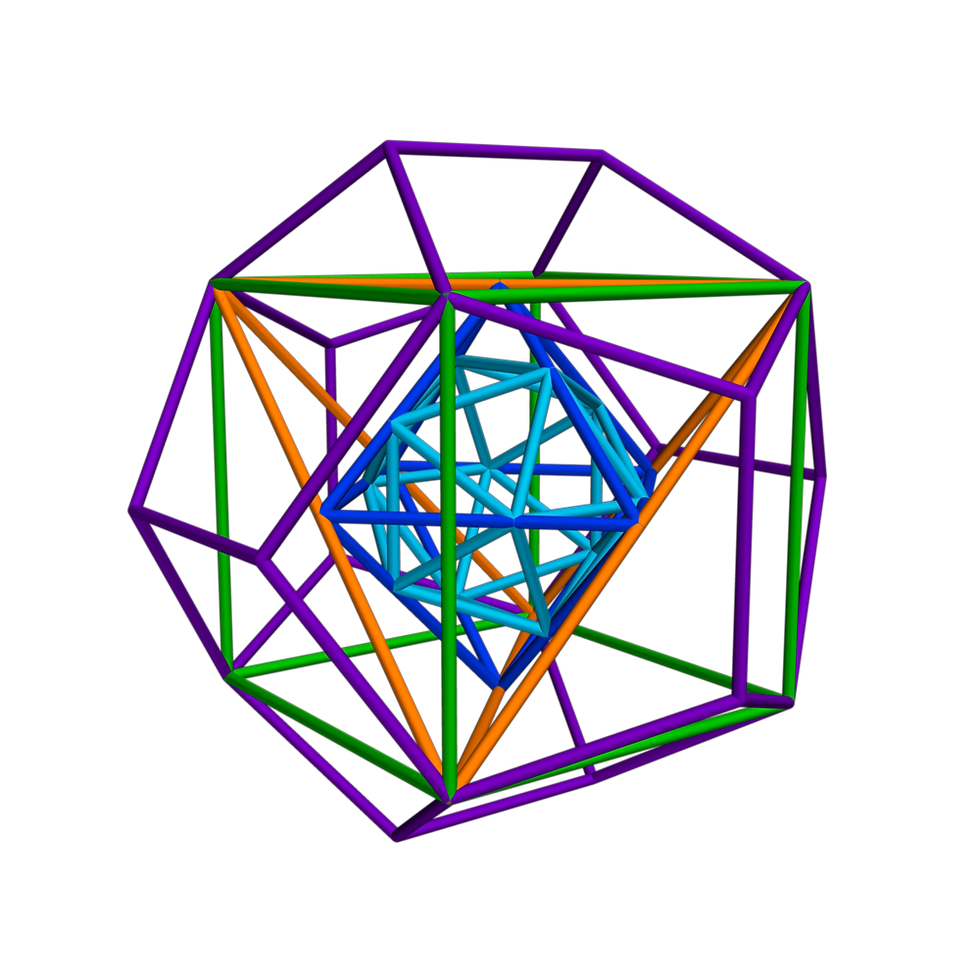In order to complete the metamorphosis from a two-dimensional shape to a three-dimensional shape, we need to extract two final Platonic solids from Metatron’s cube. Then we will have a vibrant, moving, model of Metatron’s cube. Understanding the movement within Metatron’s cube is crucial to understanding the energy within it. The variance in the energy within Metatron’s cube results in the diversity of the matter that manifests through it.
The next Platonic solid that we want to focus on is the dodecahedron with its twelve sides. Each face or side of the dodecahedron is shaped like a pentagon. Once again there is more than one dodecahedron within Metatron’s cube and there is more than one perspective to draw it from. We want to focus on the larger one. It is rather difficult to see the dodecahedron in the traditional two-dimensional image of Metatron’s cube shown below. I have superimposed the dodecahedron on the image.

Click on the video below to see how the dodecahedron is extracted from the two-dimensional image of Metatron’s cube.
You will notice that the dodecahedron is much easier to see in the three-dimensional model of Metatron’s cube show below. Several of the purple faces can be seen.

This brings us to the final Platonic solid in Metatron’s cube and that is the icosahedron. The icosahedron has twenty faces and each one is a triangle. There seems to be only one icosahedron within Metatron’s cube, but it can be drawn from two different perspectives. It, too, is difficult to see in the traditional two-dimensional image. You can see the superimposed image on the two-dimensional Metatron’s cube below.

Click on the video below to see how the icosahedron is extracted from the two-dimensional image of Metatron’s cube.
You can see the light blue icosahedron in the middle of the three-dimensional model shown above. Several of the faces can be seen.
There are actually three more shapes within Metatron’s cube, the circles, a Tesseract, and a Merkaba. The circles within Metatron’s cube become spheres when we move them to three-dimensions. They are very important because they provide the fractal aspects of each cube. I will briefly mention here that within each circle or sphere, there is another complete Metatron’s cube. I hope you can envision how this can scale both larger and smaller.
Since the Tesseract and the Merkaba are not considered to be Platonic solids, I will not discuss them any further here. They will be discussed in detail in subsequent blogs.
In summary, each Platonic solid within the two-dimensional traditional image of Metatron’s cube needs to be expanded into three dimensions. When we do this, we can begin to visualize the movement within Metatron’s cube. This is critical to our understanding of how Metatron’s cube generates energy and manifests that energy as matter.
Click on the video below to see the three-dimensional image of Metatron’s cube rotating. This is the result of our efforts to build the three -dimensional Metatron’s cube. I hope that this three-dimensional image of Metatron’s cube will become as recognizable as the traditional two-dimensional image.
コメント